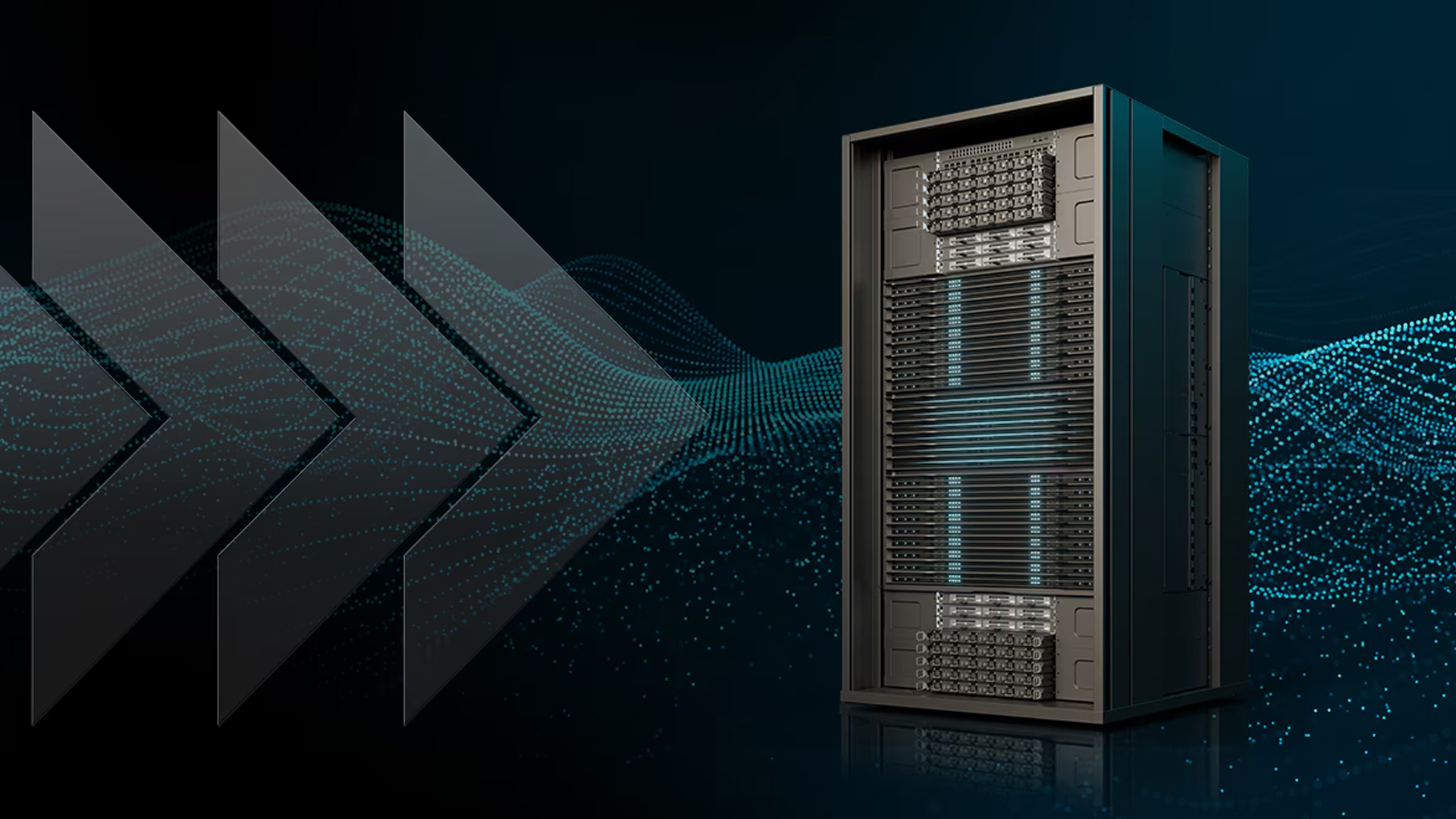AMD debuts Helios rack-scale AI hardware platform at OCP Global Summit 2025 — promises easier serviceability and 50% more memory than Nvidia's Vera Rubin
Combining AMD Instinct graphics chips, AMD Epyc CPUs, and AMD Pensando network hardware.

AMD has showcased its Helios next-generation AI hardware platform built for the Meta OpenRack Wide form-factor at the Open Compute Project Global Summit in San Jose, California. Built for streamlined scalability within an AI-first data center environment, this is AMD's big pitch to compete directly with Nvidia's rack-based GPU and CPU combinations, like the Blackwell and Grace-powered GB300 NVL72.
AMD debuted the Helios platform earlier this year, highlighting its ground-up design using all-AMD hardware. It combines AMD's Epyc server CPUs with Instinct 400 GPUs, AMD Pensando networking interfaces, and AMD ROCm software, giving it what AMD claims is a big advantage for performance and efficiency in the rapidly scaling AI infrastructure industry.
To enhance that scalability, AMD has now demonstrated it as compliant with the new Open Rack Wide specification developed by Meta. It was developed to improve power, cooling, and serviceability for AI systems. Supporting this and OPC standards will allow AMD partners to scale up faster and more effectively, AMD claims.
“Open collaboration is key to scaling AI efficiently,” said Forrest Norrod, executive VP and GM of the Data Center Solutions Group, AMD. “With ‘Helios,’ we’re turning open standards into real, deployable systems — combining AMD Instinct GPUs, EPYC CPUs, and open fabrics to give the industry a flexible, high-performance platform built for the next generation of AI workloads.”
Each of the MI450 GPUs deployed as part of the Helios system will have access to up to 432GB of HBM4 memory, with a total bandwidth of 19.6 TB/s. With 72 of those GPUs in each Helios system, it should be able to deliver 1.4 exaFLOPS of FP8 performance, with 31TB of HBM4 memory overall.
AMD even took a swipe at Nvidia in the announcement, claiming that this will work out to 50% greater memory capacity than Nvidia's next-generation Vera Rubin will offer.
AMD also announced the first customers with this Helios system. In what's described as an "expansion of their long-standing, multi-generation collaboration," AMD has partnered with Oracle for the first deployment of the Helios rack system. It will involve Oracle deploying some 50,000 MI450 GPUs starting in Q3 2026, with more to come in 2027.
Get Tom's Hardware's best news and in-depth reviews, straight to your inbox.
That shows strong confidence from potential customers already. Although consumers will need to wait for Nvidia and AMD to launch next-generation graphics products designed for gaming, AI developers have a big head start and a better idea of what's coming down the pipe. Although everyone is scrambling for any compute power they can get for AI data center developments, if AMD's hardware couldn't at least offer credible competition to Nvidia's future Vera Rubin designs, it wouldn't be striking deals like this.

Follow Tom's Hardware on Google News, or add us as a preferred source, to get our latest news, analysis, & reviews in your feeds.

Jon Martindale is a contributing writer for Tom's Hardware. For the past 20 years, he's been writing about PC components, emerging technologies, and the latest software advances. His deep and broad journalistic experience gives him unique insights into the most exciting technology trends of today and tomorrow.